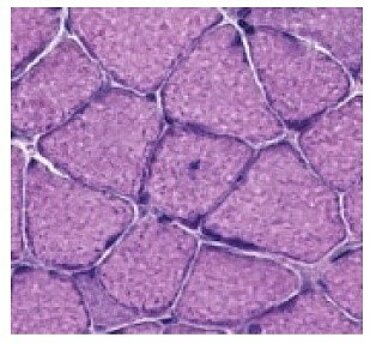A breast cancer drug to treat centronuclear myopathies
Centronuclear myopathies can be caused by mutations in the DNM2 or BIN1 genes. In an article published in the journal Brain, Jocelyn Laporte's laboratory shows that the administration of tamoxifen, a molecule already used clinically for the treatment of breast cancer, increases force production in mice affected by these forms of myopathies. Tamoxifen reduces the level of dynamin 2, a protein abnormally present in these diseases, and limits muscle weakness, providing a new avenue of treatment.

Gineste, C.
Centronuclear myopathies are rare and severe genetic diseases affecting children, adolescents and adults and leading to progressive muscle weakness that may be accompanied by respiratory deficits. Scientists estimate that 250 children are born worldwide with centronuclear myopathies each year. Today, no treatment is available for these diseases. Recently, Jocelyn Laporte's team demonstrated that tamoxifen has beneficial effects on muscle in myotubular myopathy, a very severe form of X-linked centronuclear myopathy caused by mutations in the MTM1 gene.
In a previous study, Jocelyn Laporte's laboratory also highlighted the involvement of the abnormally high quantity of dynamin 2 in the development of centronuclear myopathies linked to the DNM2 or BIN1 genes. By decreasing the amount of this protein in the muscle of mouse models with centronuclear myopathies, they were able to correct the muscle weakness. One of the avenues studied to counteract the development of the disease is related to the reduction of dynamin 2.
In this study, researchers show that tamoxifen administration improves muscle contractility in animal models of myopathies caused by mutations in the DNM2 and BIN1 genes. This improvement is associated with a decrease in the amount of dynamin 2. The decrease in dynamin 2 is itself correlated with a decrease in cullin 3, a protein involved in the degradation of proteins by the ubiquitin-proteasome system. The researchers identify this system as the main target of tamoxifen.
The beneficial effects of tamoxifen on muscle function in mouse models of myopathies caused by mutations in the DNM2 and BIN1 genes indicate that this molecule is a common therapeutic strategy for several forms of centronuclear myopathies to limit the development of muscle weakness. Thus, this work supports the repositioning of a cancer treatment to improve myopathies.
